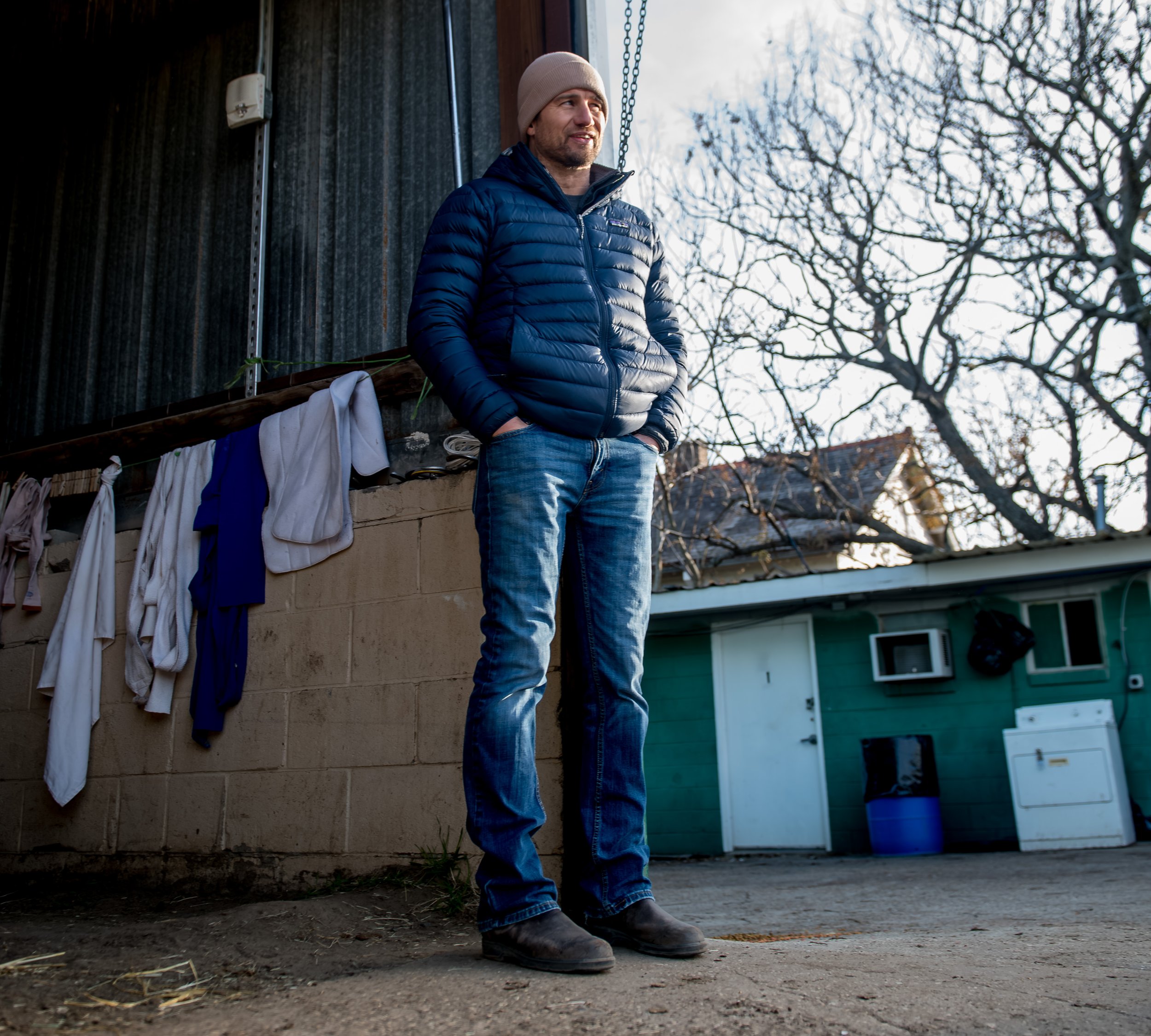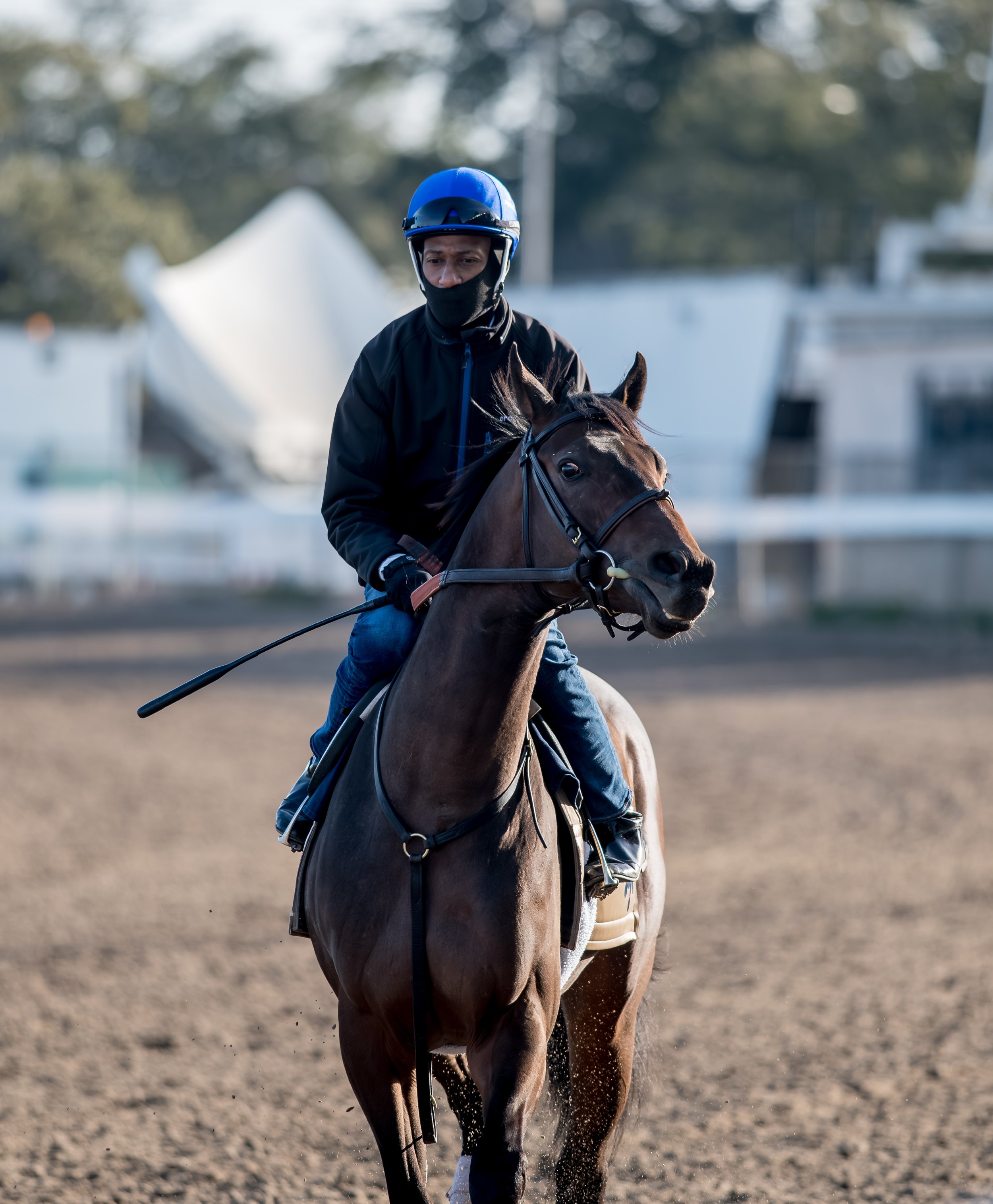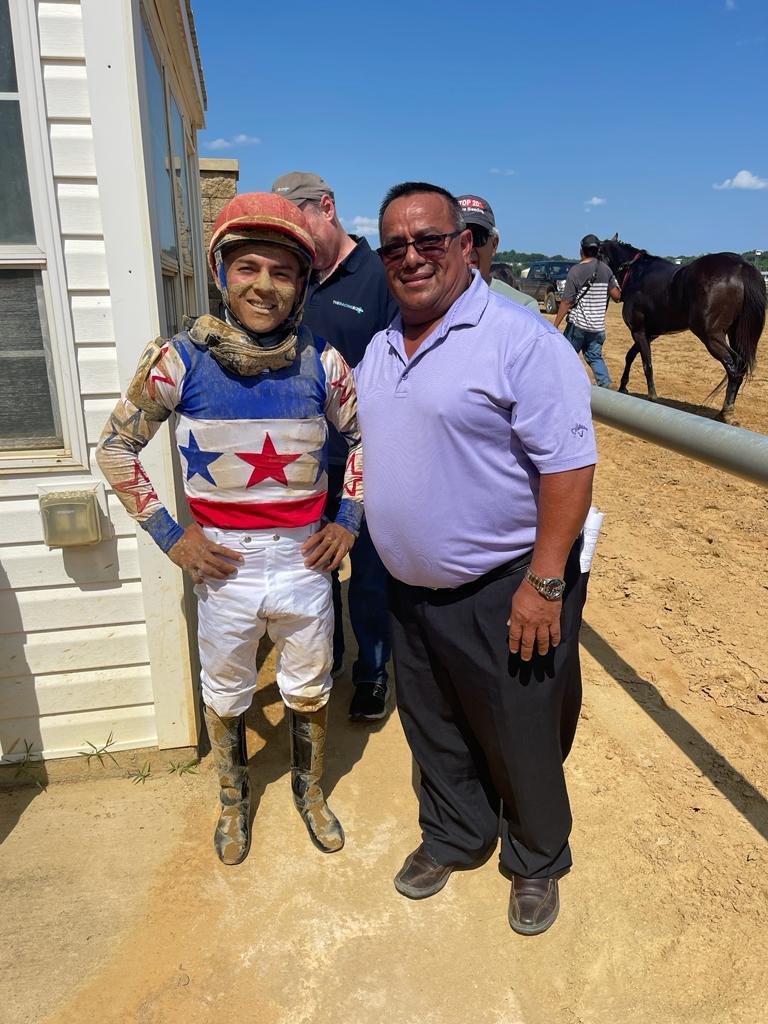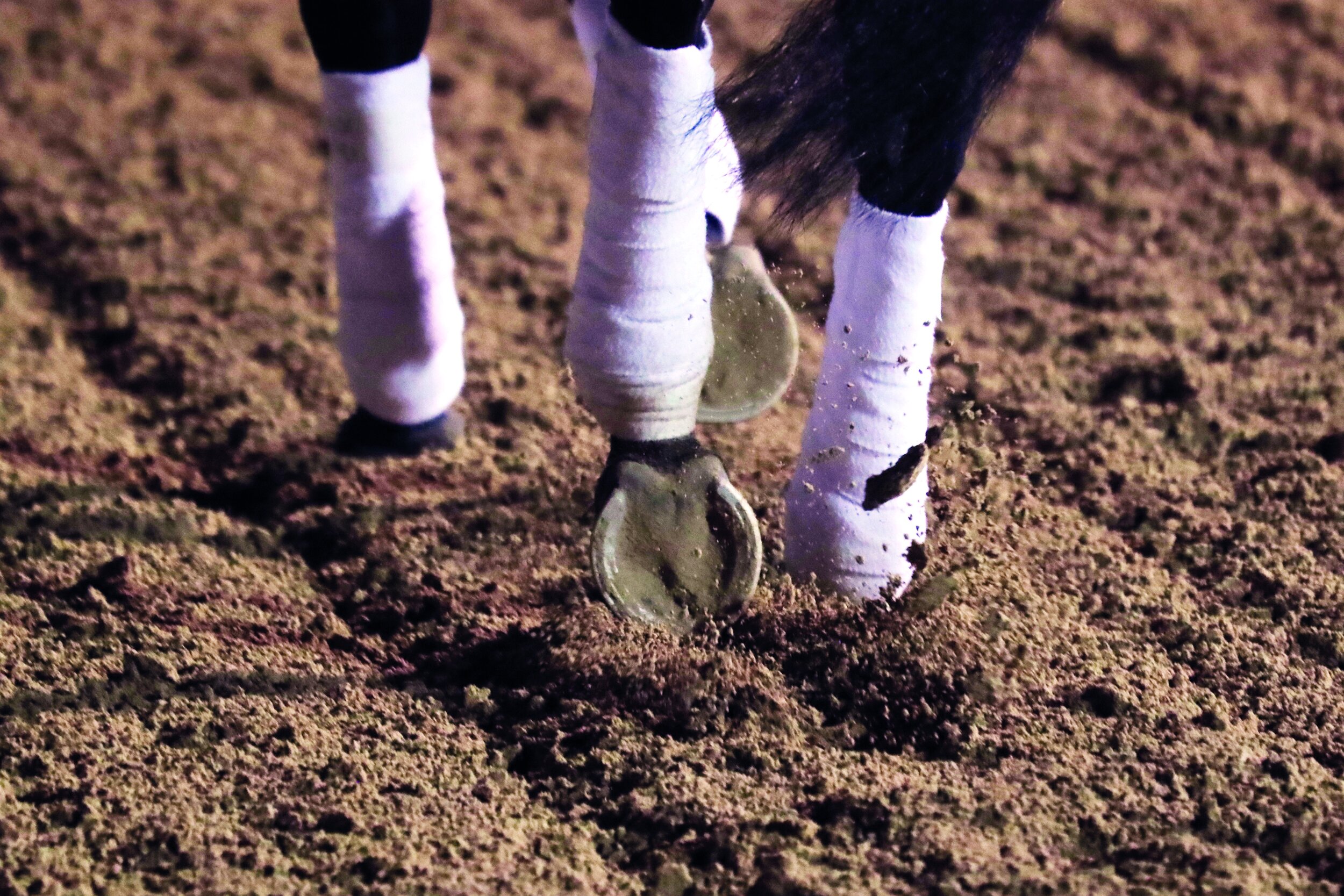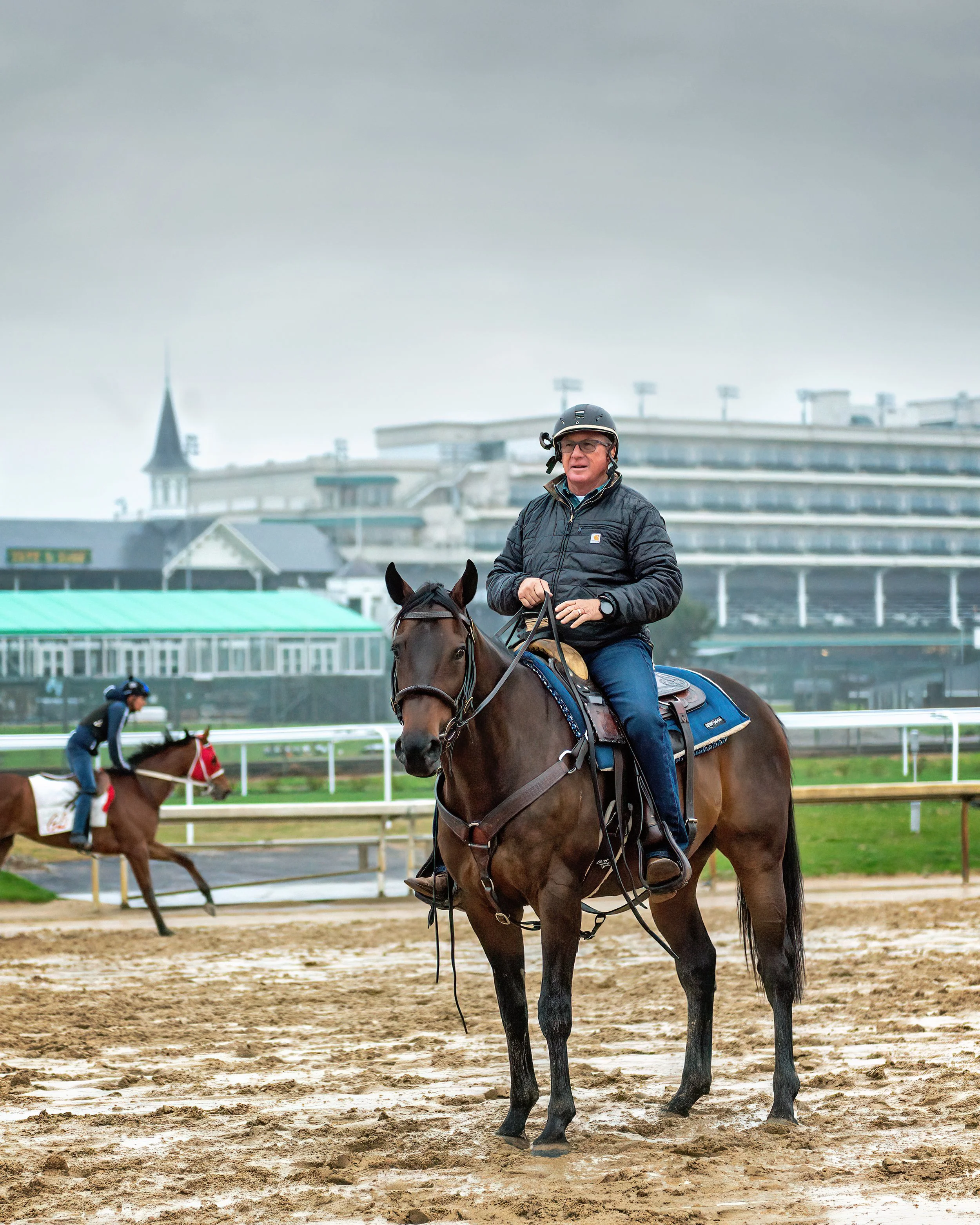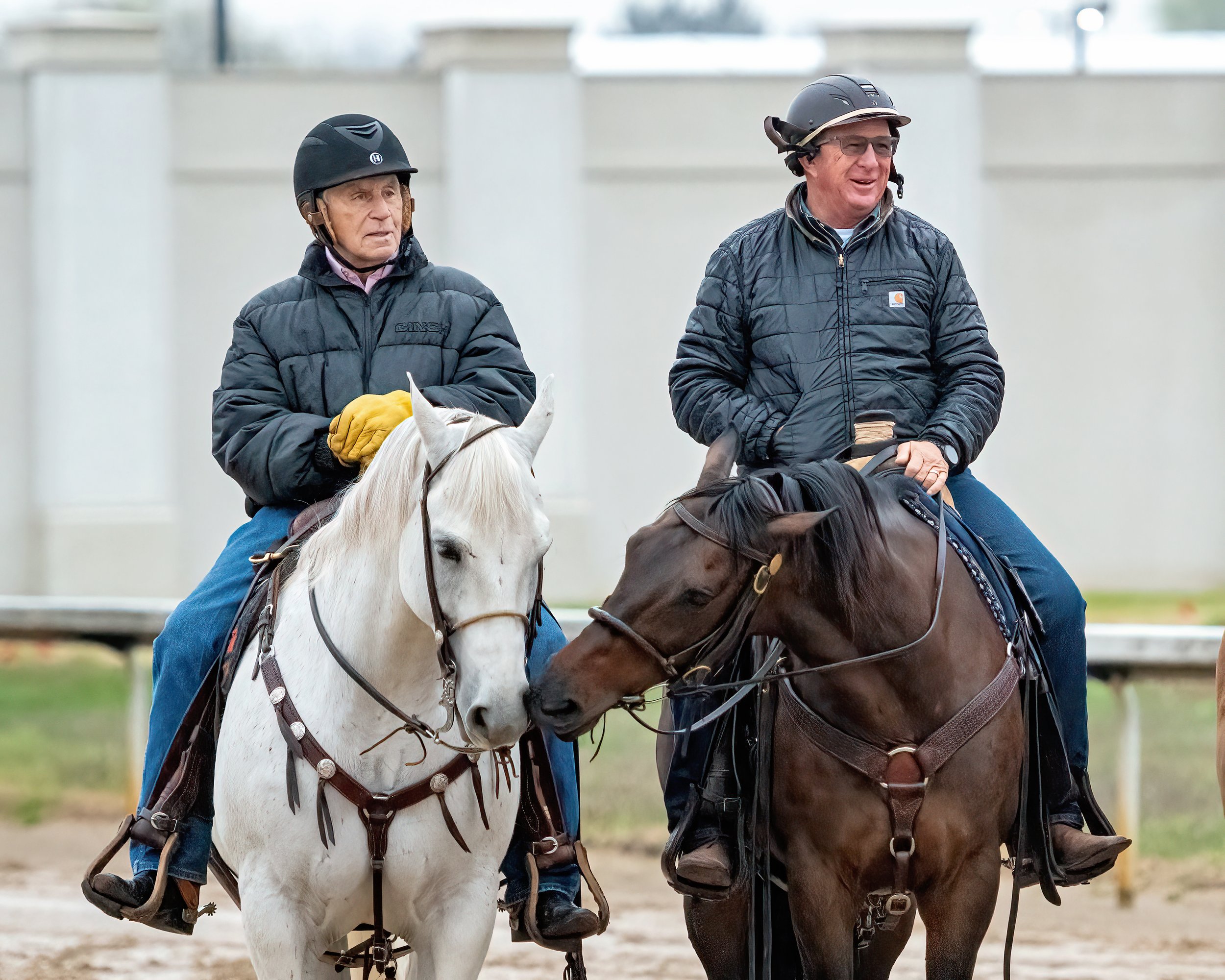Danny Gargan - the trainer of 2024 Kentucky Derby contenders - Dornoch and Society Man
/Article by Bill Heller
Hall of Fame trainer Nick Zito didn’t have a horse in either the Grade 1 Ashland Stakes at Keeneland April 5th nor the Grade 1 Blue Grass Stakes the following day. But he hoped for a personal daily double of those races with two of his protégés, Jorge Abreu and Danny Gargan, saddling a top contender in each race - Abreu with Jody’s Pride in the Ashland and Danny Gargan with Dornoch in the Blue Grass.
Zito didn’t get what he wanted. Jody’s Pride ran out of gas in the Ashland and is getting a freshening before resuming her three-year-old campaign later this summer. Dornoch finished fourth in the Blue Grass and is now all systems go for a run in the Kentucky Derby.
Come the first Saturday in May, Danny Gargan will remember his first Kentucky Derby runner, Tax, who he claimed for $50,000 in his second career start in a maiden claimer at Keeneland on October 21st , 2018. Tax took Gargan to the 2019 Kentucky Derby, when he finished 15th, beaten 15 lengths at odds of 35-1.
Tax went on to win the Grade 2 Jim Dandy Stakes at Saratoga and the Grade 3 Harlan's Holiday Stakes at Gulfstream Park and in the process became Gargan’s highest-earning horse with $1,102,160. “He’s my favorite,” Gargan said.
Gargan did his homework to nab Tax, a son of Arch out of the Giant’s Causeway mare Toll. “I watched his video in his first race,” Gargan said. “He’s a really well-bred horse. He looked beautiful in the video. He sprinted that day. I was in New York, looking around for horses. He popped up in the entry box at Keeneland. I flew from New York to Kentucky to claim him.”
When he did, he called two of his owners, Randy Hill of R.A. Hill Stable and Dean Reeves of Reeves Thoroughbreds. “He called me up and asked me if I wanted in on Tax,” Hill said. “I said yes. Obviously, that worked out well. Danny’s one of my favorite guys, Danny’s a very good trainer. He’s finally gotten a chance to work with some good horses. He’s a terrific guy, he deserves this.”
Reeves said, “We had a lot of fun with that horse. It was a great run. Winning at Saratoga especially a big race up there.”
Gargan loved Tax: “He was a wonderful horse to be around, big and beautiful, just a kind soul in the barn. You loved seeing him there every day. He had a long career. He stepped into a grate and got his ankle caught. He missed more than a year.”
Tax came back off a 16 ½ month layoff to win a $100,000 stakes at Delaware on July 9th 2022, an outstanding feat by Gargan. “He was a pretty cool horse,” Gargan said.
Gargan has now trained three sons of Good Magic and all are now stakes horses. First up was Dubyuhnell who in 2022 Gargan thought might take him back to the 2023 Kentucky Derby after he captured the Grade 2 Remsen Stakes in his final start as a two-year-old. Instead, he finished 8th in the Grade 3 Sam F. Davis and 11th in the Grade 1 Florida Derby.
Now in 2024, Gargan has two sons of Good Magic in the Kentucky Derby. Dornoch, who finished fourth in the Grade 1 Blue Grass and Society Man, who finished second in the Grade 2 Wood Memorial at odds of 106-1.
Dornoch looks as talented as his full brother, Mage, who won the 2023 Run for the Roses. “They look opposite,” Gargan said.
“My horse is a real big bay. Mage is a medium chestnut. They don’t look the same, but they both have big hearts. You can’t breed that.”
Dornoch, was bred by Grandview Equine and sold for $325,000, $90,000 more than his full brother Mage, at the 2022 Keeneland September Yearling Sale.
Last November Mage and Dornoch’s dam, Puca, went through the ring at Keeneland and was sold privately for $2.9m. This year, on April 4th, Puca produced her third colt by Good Magic who like his esteemed brothers all share an April birth date.
Dornoch’s name is intriguing, referring to the Royal Dornoch Golf Club in the Scottish Highlands where golf has been played for more than four centuries.
Born one year and four days after Mage was foaled, Dornoch spent his early days at historic Runnymede Farm in Paris, Kentucky.
For his early education, Dornoch was sent to Raul Reyes at King Equine in Ocala, Florida. Reyes detected that Dornoch wasn’t moving comfortably in his behind and discovered that one of Dornoch’s testicles hadn’t descended. The testacle was removed, and Dornoch showed vast improvement immediately.
Reyes called it a 360-degree turnaround in a story in Blood-Horse. Gargan thinks Dornoch will offer him a different experience if he makes it into the Derby starting gate.
“Tax got us there. We were lucky enough to do the walk-over. This is different. This horse can win it. I’m happy to be a part of it. He reminds me of Louis Quatorze (the 1996 Preakness Stakes winner trained by Gargan’s former boss, Hall of Fame trainer Nick Zito). I’m hoping Dornoch can win a Triple Crown race. I’m preparing him the same way Nick did with Louis. Just keep moving forward. In horse racing, you have to hope you have a great day. In the past, we were just happy to be there. Now we have a horse that could win it.”
Zito, has been a fan of his protégé for a long time: “Danny was probably the best one I ever got along with. He read my mind. The guy actually read my mind, which I loved. He wants to win so bad. He communicates with horses so well. He said Dornoch resembles Louis. It shows his remembrance of great horses. That’s what I admire about Danny Gargan. Danny’s not taking a back seat to anybody at the Derby. He’ll have his horse ready to run.”
If Dornoch or Society Man win the Kentucky Derby, it will come 51 years after Gargan’s father, also named Danny, rode Bag of Tunes to win the 1973 Kentucky Oaks.
Unfortunately, Gargan, a native of Louisville, was just four when his father died. “I was so young, I don’t remember that,” Gargan said. “I grew up on the backside of Churchill Downs. I loved it from the start. It’s just something in your DNA.”
Asked how he got onto the Churchill Downs backstretch, Gargan said, “It was 30 years ago. Back then, they let everybody in.”
He worked for Nick Zito off-and-on for several years, eventually becoming his assistant. “Me and Nick are real good friends to this day,” Gargan said.
Gargan, though, came to a conclusion: “It takes a lot of money to be a horse trainer.”
So he switched careers, becoming a jockey agent. “I did it for a few years,” he said. His clients included Pat Valenzuela, Brian Hernandez Jr. and Jesús Castañón.
He called his jockey agent days “a lot of fun,” but he eventually became bored with it. He hooked up with owner Merrill Scherer on a few horses and, after two real good meets at Saratoga in 2011 and 2012, Gargan, decided to begin training on his own. He credits P.J. Campo, the racing secretary and then vice- president for racing of the New York Racing Association, for pushing him in that direction.
Gargan began a modest-sized stable in 2013, broke the $1 million mark in earnings in 2015 and has had at least $1.8 million in earnings every year since. “I race at Gulfstream Park and New York,” he said. “I don’t train a ton of horses, eight in New York and 22 in Florida. When you get so few young horses, it’s a blessing to have one,” he said. “It’s not every year. I’ve been lucky to have some nice horses in the past, and you have to be just thankful.”
Tax was not his only great claim.
On May 15th , 2017, Gargan claimed Divine Miss Grey for $16,000 for R.A. Hill and Corms Racing Stable off a three-quarter length victory as the 1-2 favorite.
Divine Miss Grey turned into a star for her new connections, finishing second in the 2018 Grade 1 Beldame at Belmont Park and capturing the Grade 2 Chilukki Stakes at Churchill Downs. She finished her career 12-for-26 with six seconds, one third and earnings of $934,172. “You get lucky sometimes,” Gargan said. “The good thing about what she did for me, was she brought me Dean Reeves and Randy Hill. They are the ones who probably brought me to train Dornoch. They wanted me to train younger horses. Without those two supporting me, I might have never made it to this point.”
Hill is one of many partners on Dornoch. Reeves is not.
When asked about his success, Gargan said, “I’m pretty lucky in that I trained for some good people, like Dean Reeves and Randy Hill. They want the horse put first. Always put the horse first. I’m blessed for having them. I don’t have to work the horse or race the horse. When you have owners that understand that stopping and doing the right thing for the horse is the most important thing, that’s great. That’s what’s changed for me the last four, five years is to be able to always put the horse first.”
He knows what he’s up against: “This game can be tough. You try to keep them happy, keep them healthy and keep them racing. It’s something we’ve always believed. With the young horse, it’s a tremendous factor. You watch other trainers and learn. Nick was a big fan of giving a horse his first race. Bill Mott does that, too. They don’t have to win first time out. They’re going to get better with racing. That’s our philosophy. Who knows if I’m right or wrong. That’s what we believe.”
Dornoch lost his maiden debut at Saratoga, too, finishing second. He finished second again, in the Sapling Stakes at Monmouth, before breaking his maiden at Keeneland and, just like Dubyuhnell, took the Remsen by a nose, defeating a potential Kentucky Derby rival, Sierra Leone.
Racing on the lead on the rail, Dornoch set a pressured pace, opened a two-length lead in the stretch and then was confronted and passed by a fast-flying Sierra Leone. But Dornoch wasn’t done. He gamely fought back and re-took the lead just before the finish line. Like Gargan said, you can’t breed heart.
Winning his three-year-old debut in the Fountain of Youth pushed Dornoch to the front of many Derby contender lists. He was fourth to Sierra Leone in the Grade 1 Blue Grass, but he didn’t get his preferred trip pressing or making the pace.
“We wanted to train him to sit behind horses,” Gargan said. “Sometimes, they have to experience things to get educated before they can improve. That was the first time he had dirt in his face and he fought it the first three-quarters of a mile.”
Dornoch is owned by West Paces Racing, Belmar Racing and Breeding, Two Eight Racing, Pine Racing Stables and R.A. Hill Stable. Gargan offered a piece to Reeves Thoroughbreds, but Reeves declined. “He asked me to buy into the horse,” Reeves said. “At the time, it just didn’t work. I passed. Too bad. I’m happy for those guys. I’m pulling for those guys. I hope he can get it done. He’s a great horse.”
Larry Connolly, who began West Paces Racing, mostly with his golf buddies in Atlanta in 2019, grew up in Rye, New York, and frequented Saratoga and Belmont Park. In 2012, Connolly sold his company, Connolly LLC, the largest global-recovery auditing firm, freeing up capital to buy Thoroughbreds. “It was a good time to jump in the deep part of the pool,” he said.
The final push into ownership came after five years of visiting Cheltenham races in England with his friend Lawrence Kenny, a retired steeplechase jockey. “After five years at Cheltenham, the racing was so good and the people were so nice,” Connolly said.
“We used to go to the pubs and see a lot of horsemen. I said, `Wouldn’t it be great if we could pool our resources together and get into a big race?’”
Connolly got involved with two partnerships, Donegal in 2014 and then Starlight. Connolly was able to enjoy the winner’s circle after Donegal’s Keen Ice upset Triple Crown Champion in the 2015 Travers Stakes at Saratoga.
Connolly said Royal Dornoch is his favorite golf course in Scotland. One of his partners on the horse is retired baseball star Jayson Wirth, an outfielder who played 15 seasons with the Blue Jays, Dodgers, Phillies, and Nationals.
Asked about Dornoch’s Derby pursuit, Connolly said, “It’s just super exciting. Every day is like Christmas Eve. What gets me excited about Dornoch is, he looks the part: size, grit, determination.”
West Paces Racing, Gargan and GMP Stables LLC are the owners of Society Man, who was stepping up to graded stakes company in the Wood off an impressive maiden victory. Three starts back, Society Man was eighth in the Grade 3 Withers. “He had a rough trip in the Withers,” Gargan said. “We’ve always liked him. He’s a nice horse.”
Gargan said Dornoch is bigger than Society Man, another son of Good Magic out of You Cheated by Colonel John. ‘They breeze together a lot,” Gargan said. “He worked with Dornoch for the Remsen.”
Asked about Society Man’s jump up in class in the Wood, Gargan said, “Sometimes you roll the dice and it works out. He’s improving at the right time and he can get the distance.”
Dornoch’s work tab was modest as he prepared for the Blue Grass Stakes on April 6th. “We just wanted to keep him healthy and sound,” Gargan said. “He’s a big colt. He can be playful. A little rambunctious. He’s not mean. He’s a big strong horse, just under 17 hands. He’s just under it.”
After his Fountain of Youth victory, Gargan told a TV interviewer that he guessed he had Dornoch at 85 percent for his three-year-old debut. The obvious goal is 100 percent on the first Saturday of May. “I don’t think we’ve seen the best from him,” Gargan said. “He’s going to be fun for a long time.”
















